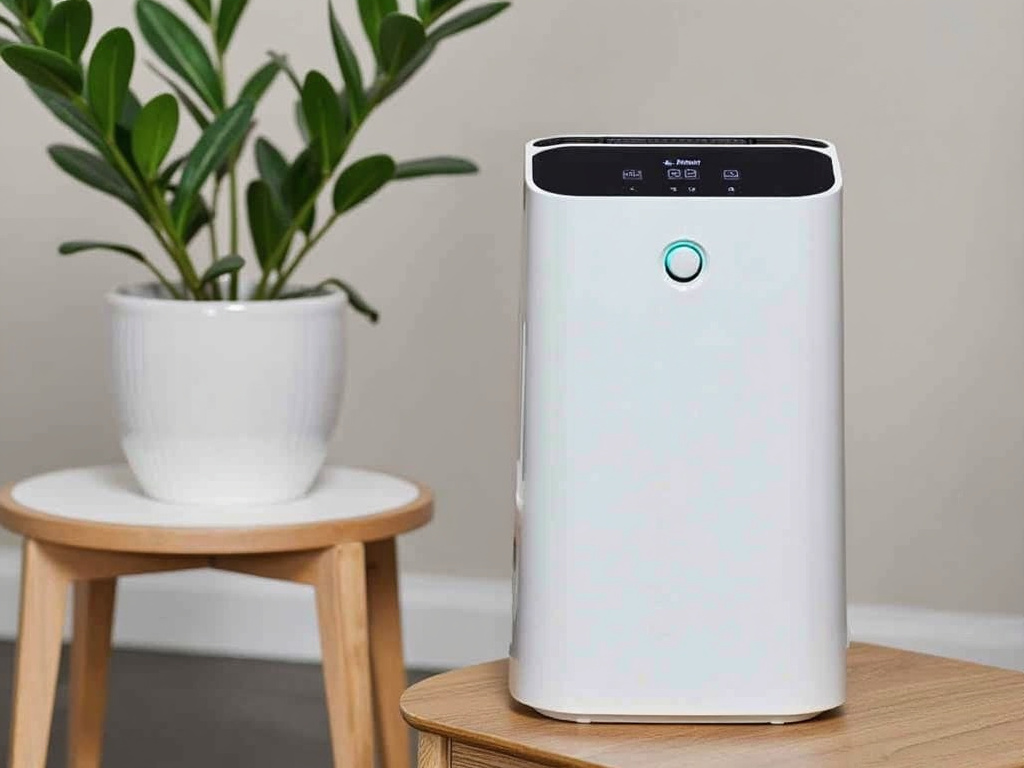With increasing concerns about air quality, both indoors and outdoors, many people are turning to personal air purifiers to breathe cleaner air wherever they go. Whether you’re commuting, traveling, or simply spending time in a crowded indoor space, a personal air purifier can be a convenient way to protect yourself from pollutants, allergens, and even airborne viruses. But with so many options on the market, how do you choose the right one? Here’s a guide to help you make an informed decision when looking for a personal air purifier.
1. Understanding Personal Air Purifiers
Personal air purifiers are compact, portable devices designed to clean the air immediately around you. Unlike larger home air purifiers that clean the air in entire rooms, these devices are meant to be carried or worn, providing a bubble of cleaner air in your immediate vicinity. They are especially useful in environments where you have little control over air quality, such as public transportation, offices, or during outdoor activities.
2. Types of Personal Air Purifiers
There are several types of personal air purifiers, each using different technology to purify the air:
- Ionizers: These devices emit negative ions that attach to airborne particles like dust, pollen, and smoke, causing them to fall to the ground or stick to surfaces rather than staying in the air you breathe. Ionizers are generally small and wearable.
- HEPA Filters: Some personal air purifiers use High-Efficiency Particulate Air (HEPA) filters to trap particles as small as 0.3 microns, including dust, pollen, and some bacteria. These are effective for people with allergies but may be slightly larger than ionizers.
- UV-C Light: UV-C light purifiers use ultraviolet light to kill or inactivate microorganisms like bacteria and viruses. While effective, they are often combined with other filtration methods for comprehensive protection.
- Activated Carbon: Personal air purifiers with activated carbon filters are excellent at removing odors and volatile organic compounds (VOCs) from the air, which are common in urban environments.
3. Key Features to Consider
When choosing a personal air purifier, there are several key features to consider to ensure it meets your needs:
- Portability: Look for a device that is lightweight and easy to carry. Wearable options can be worn around the neck, while others might clip onto bags or fit into pockets.
- Battery Life: Since personal air purifiers are portable, battery life is crucial. Check how long the device can run on a single charge and whether it has a rechargeable battery or requires replaceable batteries.
- Coverage Area: Consider the effective coverage area of the purifier. Some are designed to clean the air within a small radius around your face, while others may have a larger coverage area suitable for a desk or small room.
- Noise Level: If you plan to use your purifier in quiet environments, consider the noise level. Some purifiers operate quietly, while others may produce a noticeable hum.
- Maintenance: Check how often the filters need to be replaced or cleaned. Some personal air purifiers require regular filter changes, which can add to the long-term cost.
- Effectiveness: Research the device’s effectiveness in removing the specific pollutants you’re concerned about. For instance, if you’re worried about allergens, a HEPA filter might be more effective than an ionizer.
4. Popular Personal Air Purifiers on the Market
Several personal air purifiers have gained popularity due to their effectiveness and portability. Here are a few examples:
- AirTamer A310: This wearable ionizer is popular for its compact design and long battery life, capable of running for up to 150 hours on a single charge. It emits negative ions to purify the air in a small personal space.
- Wynd Essential: This compact air purifier uses a medical-grade filter to remove allergens, smoke, and other pollutants from the air. It’s small enough to fit in a car cup holder or on a desk.
- LG PuriCare Mini: A portable air purifier with a built-in HEPA filter, the LG PuriCare Mini is effective at filtering out fine dust and allergens. It’s ideal for those who need a more robust filtration system on the go.
- IQAir Atem Desk: Although slightly larger than other personal purifiers, the IQAir Atem Desk provides powerful air purification with a HyperHEPA filter that captures ultrafine particles. It’s perfect for use in small office spaces.
5. Where to Use Personal Air Purifiers
Personal air purifiers are versatile and can be used in a variety of settings:
- During Travel: Whether on a plane, train, or bus, personal air purifiers can help reduce your exposure to airborne germs and pollutants.
- In the Workplace: If you work in an office or other indoor environment where air quality may be a concern, a personal air purifier can help create a cleaner breathing space at your desk.
- At Home: While home air purifiers are more common, a personal device can be handy for use in specific areas like your bedroom or home office.
- Outdoor Activities: For those who live in areas with high pollution levels, using a personal air purifier during outdoor activities can help reduce exposure to harmful particles.
6. Conclusion
Choosing the right personal air purifier depends on your specific needs, lifestyle, and the environments you frequent. By considering factors such as portability, battery life, coverage area, and effectiveness, you can find a device that helps you breathe easier no matter where you are. As air quality concerns continue to rise, a personal air purifier can be a valuable tool in protecting your health and well-being.
